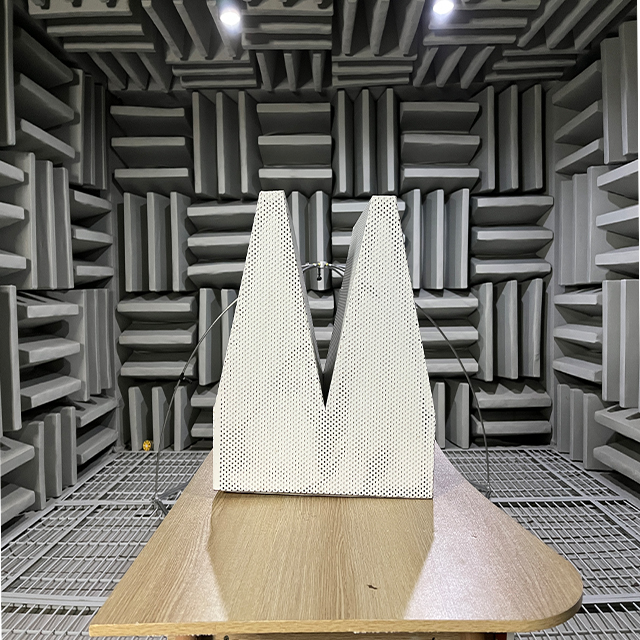
Calculating the number of spikes required for an anechoic chamber involves multiple factors, including the overall volume of the anechoic chamber, the required anechoic performance, the sound absorption properties of the spikes, the design cutoff frequency, and other design specifications. The following is a simplified basic step, but the actual design requires detailed acoustic calculations and drawing design:
Determine design requirements:
Set the cutoff frequency of the anechoic chamber (that is, the tip is required to have good sound absorption above this frequency).
Clarify the acoustic performance indicators in the anechoic chamber, such as expected acoustic effects, sound pressure levels, etc.
Calculate the wedge size:
The minimum theoretical length of the sound-absorbing wedge is calculated according to the cutoff frequency formula (such as L = 1/4 * λ, where λ is the wavelength of the corresponding frequency and c is the speed of sound).
The geometry and design of the wedge determines the actual length and shape of the wedge used.
Evaluate the surface area of an anechoic chamber:
Calculate the total area of all walls, floors, and ceilings of the anechoic chamber that need to be covered with sound-absorbing spikes.
Consider filling efficiency:
Since the wedges cannot cover the surface completely seamlessly, the filling efficiency between the spikes and the joints between the spikes and the wall must also be considered, that is, the ratio of the actual usable area to the total surface area.
Sound absorption coefficient and number of wedges:
Understand the sound absorption performance of each wedge, including the sound absorption coefficient curve and effective sound absorption frequency band.
Estimate the number of wedges needed based on the volume of the anechoic chamber, the desired acoustic performance, and the sound-absorbing capabilities of the wedges.
Preliminary design and simulation:
Use acoustic simulation software to conduct preliminary design and simulate the sound field distribution under different arrangements to obtain a more accurate number and layout of spikes.
On-site installation conditions:
Taking into account actual installation conditions, such as doors, windows, equipment openings, etc., additional spikes may be required to compensate for sound leakage caused by openings.
Finally, the process of determining the number of spikes often requires detailed acoustic calculations and simulations by an experienced acoustical designer to ensure that the final anechoic chamber will meet the expected acoustic performance standards.


